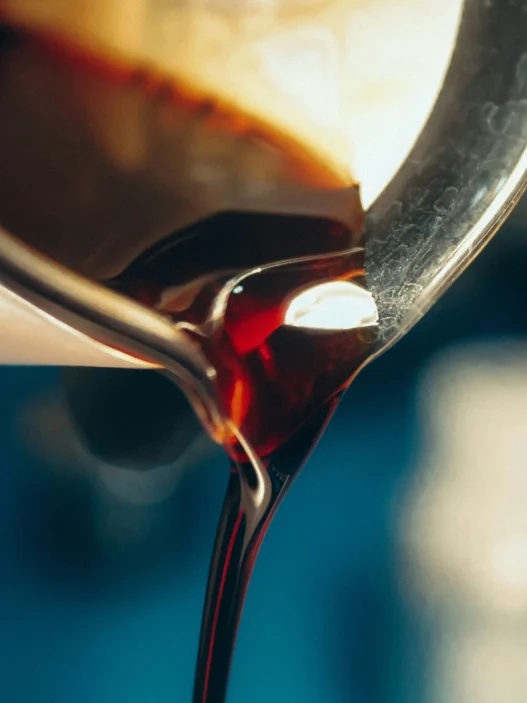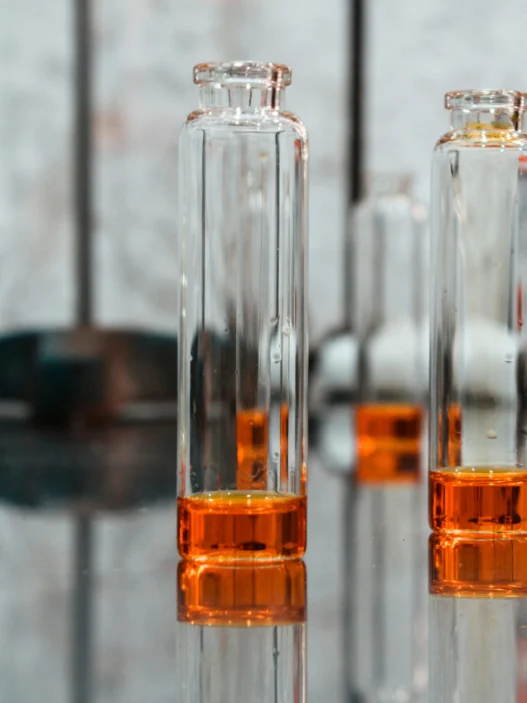DL-Tartaric acid is a compound with various applications in everyday life. It is commonly used in the food and beverage industry as a food additive to enhance flavors, stabilize emulsions, and control acidity. DL-Tartaric acid is also utilized in the pharmaceutical industry for its medicinal properties, particularly in the production of certain medications. Additionally, it is employed in the cosmetics industry for its skin exfoliating properties. Overall, DL-Tartaric acid plays a significant role in various aspects of daily life due to its versatile properties and uses.
Table of Contents:
- 💡 Commercial Applications
- ⚗️ Chemical & Physical Properties
- 🏭 Production & Procurement
- ⚠️ Safety Considerations
- 🔬 Potential Research Directions
- 🧪 Related Compounds
💡 Commercial Applications
DL-Tartaric acid, a white crystalline organic acid, finds various commercial and industrial applications. It is commonly used in the food and beverage industry as an acidulant and flavoring agent. DL-Tartaric acid is also utilized in the pharmaceutical industry for its chiral properties in drug synthesis and as a component in various industrial processes such as metal cleaning and textile finishing.
In drug and medication applications, DL-Tartaric acid plays a crucial role in pharmaceutical formulations. It is often used as a salt-forming agent to improve the solubility and stability of certain drugs. DL-Tartaric acid is also employed as a chiral resolving agent in the production of enantiomeric drugs to separate racemic mixtures into their individual enantiomers, allowing for improved therapeutic efficacy and reduced side effects.
The importance of DL-Tartaric acid extends beyond its commercial and industrial applications to the realm of drug development and formulation in the pharmaceutical industry. With its versatile properties and diverse uses, DL-Tartaric acid continues to be a valuable component in various sectors, contributing to advancements in food technology, pharmaceutical research, and industrial processes.
⚗️ Chemical & Physical Properties
DL-Tartaric acid is a white, crystalline powder with no distinct odor. It is a solid at room temperature and appears as fine particles.
The molar mass of DL-Tartaric acid is approximately 150.1 g/mol, and its density is around 1.8 g/cm³. Compared to common household items like table salt (NaCl) with a molar mass of 58.44 g/mol and a density of 2.17 g/cm³, DL-Tartaric acid has a higher molar mass and lower density.
The melting point of DL-Tartaric acid is 171°C, and its boiling point is around 200°C. In comparison, common household items like sugar (sucrose) melt at 186°C and boil at 366°C. Therefore, DL-Tartaric acid has a lower melting and boiling point than sugar.
DL-Tartaric acid is highly soluble in water and has a low viscosity. Compared to common household items like olive oil, which has limited solubility in water and high viscosity, DL-Tartaric acid exhibits greater solubility and lower viscosity.
🏭 Production & Procurement
DL-Tartaric acid is a naturally occurring organic acid that can be produced synthetically through various chemical processes. One common method involves the oxidation of tartaric acid, a natural byproduct of grape fermentation. This process produces a racemic mixture of both the D- and L- forms of tartaric acid, known as DL-Tartaric acid.
DL-Tartaric acid can be procured from chemical suppliers and manufacturers who specialize in producing organic acids. It is typically available in the form of a white, crystalline powder or granules. The acid is often packaged in sealed containers to prevent degradation and contamination during transportation.
When procuring DL-Tartaric acid, careful attention must be paid to storage and handling procedures to maintain its quality and purity. The acid is sensitive to moisture and heat, so it should be stored in a cool, dry place away from direct sunlight. Additionally, proper labeling and documentation are essential for safe transportation and regulatory compliance.
⚠️ Safety Considerations
Safety considerations for DL-Tartaric acid include the potential for skin and eye irritation upon contact. It is important to wear proper protective equipment such as gloves and safety goggles when handling this substance. In case of inhalation, move to fresh air and seek medical attention if necessary. DL-Tartaric acid should be stored in a cool, dry place away from incompatible substances to prevent any potential hazards.
DL-Tartaric acid, a white crystalline powder, is a chiral molecule that contains both L-(+)-tartaric acid and D-(-)-tartaric acid. It is commonly used in the food and beverage industry as an acidity regulator and flavoring agent. DL-Tartaric acid is also utilized in the pharmaceutical industry as a buffering agent in medications. Through its pharmacological properties, DL-Tartaric acid plays a vital role in maintaining the stability and efficacy of various formulations.
Hazard statements for DL-Tartaric acid include causes skin irritation and may cause eye irritation. It is harmful if swallowed and can cause respiratory irritation if inhaled. DL-Tartaric acid should be kept out of reach of children and pets. In case of accidental ingestion or exposure, seek medical advice immediately and provide the product label or Safety Data Sheet to healthcare professionals for proper treatment.
Precautionary statements for DL-Tartaric acid suggest avoiding direct contact with skin, eyes, and clothing. If handling the substance, it is recommended to wear protective gloves, clothing, and eye protection. Wash hands thoroughly after handling DL-Tartaric acid and before eating, drinking, or using the restroom. In case of spills, clean up immediately following proper spill cleanup procedures and dispose of waste according to local regulations.
🔬 Potential Research Directions
DL-Tartaric acid has shown promise in various research directions, particularly in the field of pharmaceuticals. Its potential as a chiral resolving agent for pharmaceutical compounds, as well as its ability to enhance the stability of certain drugs, have been of particular interest to researchers.
Another area of study for DL-Tartaric acid lies in the food and beverage industry. With its role as a food additive and acidulant, research efforts have focused on its potential applications in improving the taste, shelf-life, and stability of various food products. These studies have opened up avenues for further exploration and innovation in the food industry.
DL-Tartaric acid’s unique chemical properties have also piqued the interest of researchers in the fields of materials science and catalysis. Its potential as a catalyst in various chemical reactions, as well as its use in synthesizing new materials with novel properties, have sparked investigations into its broader applications beyond traditional uses. These research directions hold promise for exploring the full potential of DL-Tartaric acid in diverse scientific disciplines.
🧪 Related Compounds
One compound with a molecular structure similar to DL-Tartaric acid is meso-Tartaric acid. Meso-Tartaric acid is a stereoisomer of DL-Tartaric acid, containing the same carboxylic acid functional groups. Despite being a stereoisomer, meso-Tartaric acid does not exhibit optical activity due to its internal symmetry.
Another related compound is L-Tartaric acid. L-Tartaric acid is the enantiomer of D-Tartaric acid, containing the same arrangement of functional groups but with a different spatial arrangement. Like DL-Tartaric acid, L-Tartaric acid is commonly used in the food industry as a flavor enhancer and preservative due to its acidic properties.
D-Tartaric acid is yet another compound similar in structure to DL-Tartaric acid. D-Tartaric acid is the enantiomer of L-Tartaric acid, with a mirror-image spatial arrangement of functional groups. D-Tartaric acid is also known for its use in various industries, including pharmaceuticals and cosmetics, due to its chiral properties and ability to form coordination complexes.





